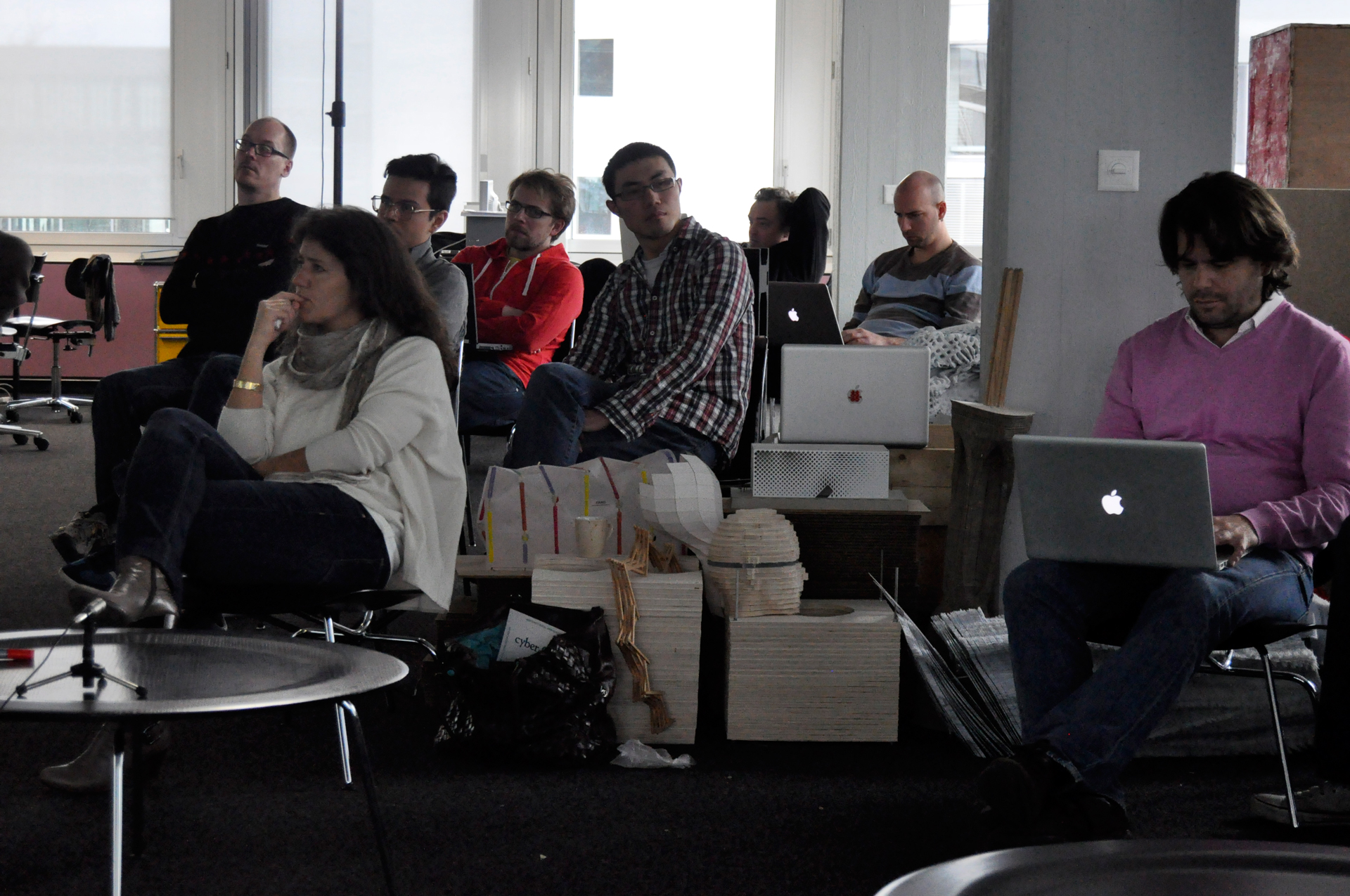
On the 29th of January the remaining in Zurich, MAS students gave a presentation of their final theses projects for the researchers and the professor of the chair Ludger Hovestadt. Here a collection of images with a short descriptions from the students’ work that can give an overview of the range of topics that they chose to deal with computationally. Along with these images some snapshots from the day of presentation.
We wish all the best to the MAS1112 in their future ventures
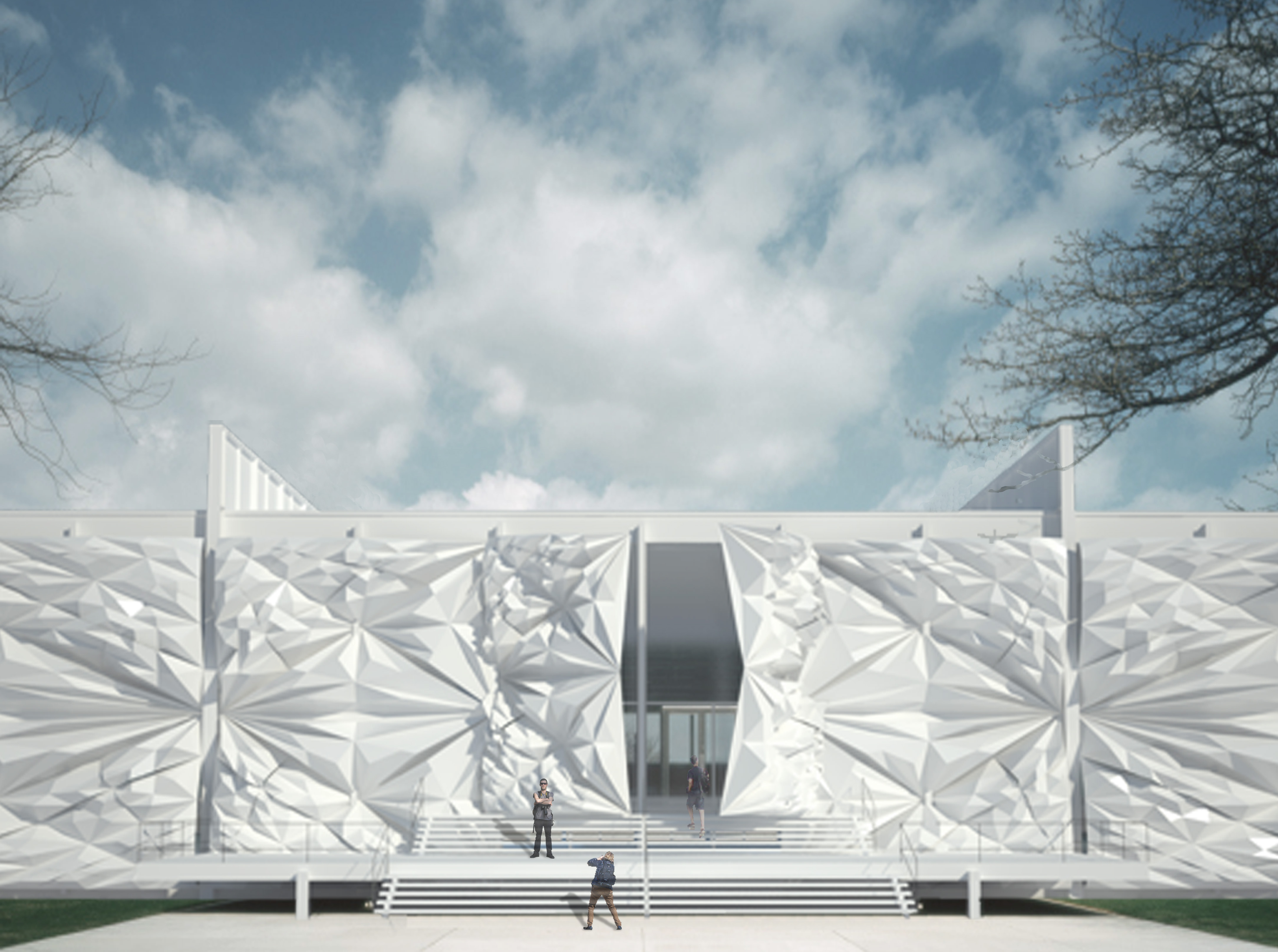
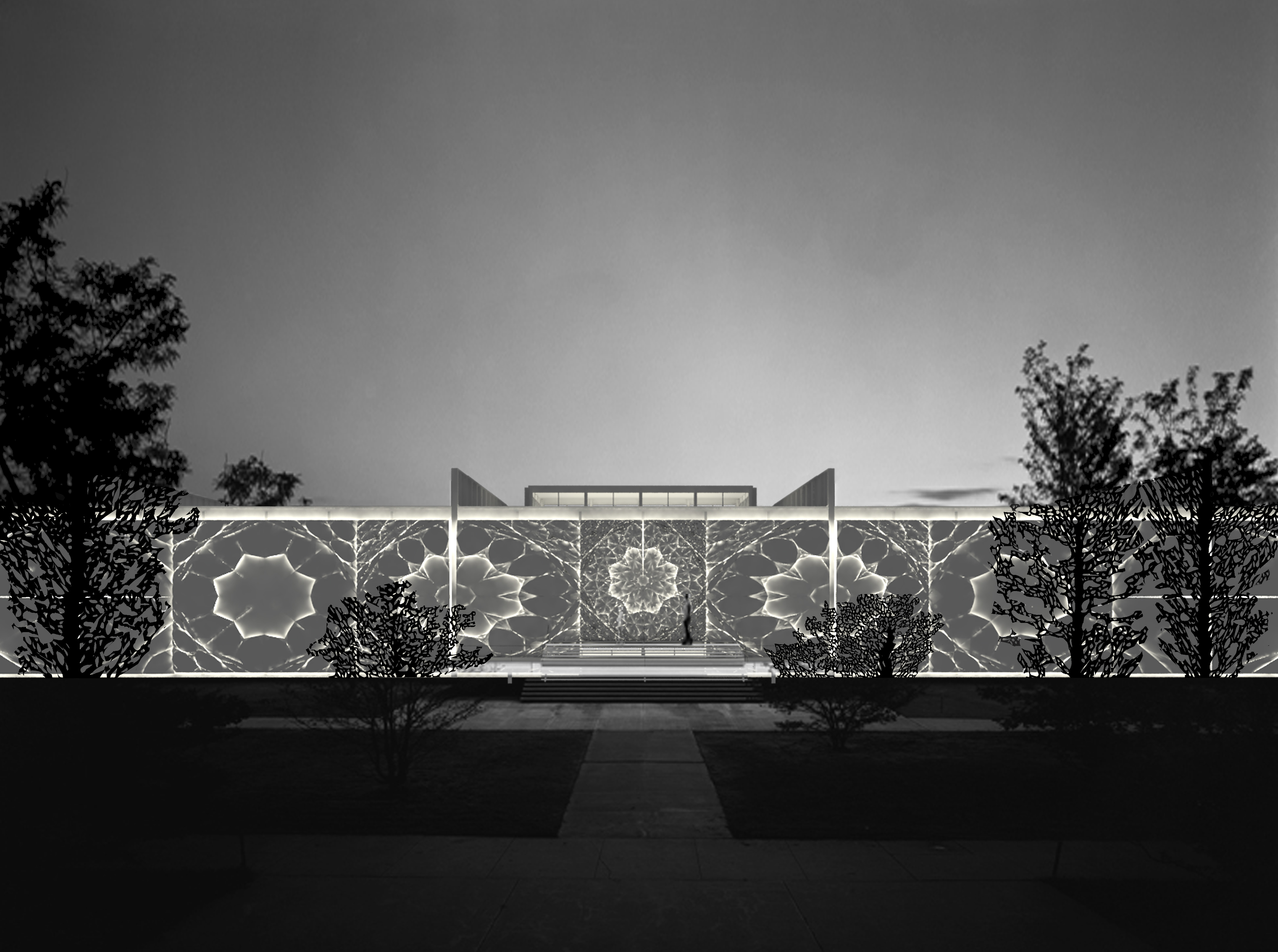 Facade-Any Geometry,Chiu Yunying
Facade-Any Geometry,Chiu Yunying
Description:Description:
This research design presents a generative algorithmic approach to achieve the new representation from modern architecture facade, such as Crown Hall of Mies van Der Rohe. Using the method of boundary representation to decompose the shape of classic architecture into points, curves and surfaces. After the abstraction of architecture, it will leave the geometric framework of facade for further redecoration. The redecorated faces will relate to the interpretation of diverse geometric patterns between abstraction and representation to express a new manifesto, an innovation that has the possibility of transforming modern architecture in the way that represent the composition of geometry subdivision, which includes the shape of symmetry and the skin of any geometry.
My approach builds on the basic subdivision theory from Michael Hansmeyer. Through adding the mathematical derivation to interplay the geometries, starting from 2D quadrilateral as initial framework, expanding it into 3-dimensional geometric shape, dividing the polygon into any geometric pattern based on the number of side and the subdivision methods here I described, it produced the sophisticated mesh consisted of diverse geometries and tiled them to reshape the facade of building. The geometry subdivision proposes the notion which is any geometry could be interplayed and weaved together through recursive subdividing procedure according to the types of geometry existed in any generation, and the composition of subdivision results with translations, rotations and reflections as symmetry operations to represent the facade of architecture.
![zurich_drawing_eth3b [Converted]](../../../wp-content/uploads/2013/02/00_title_image.jpg)
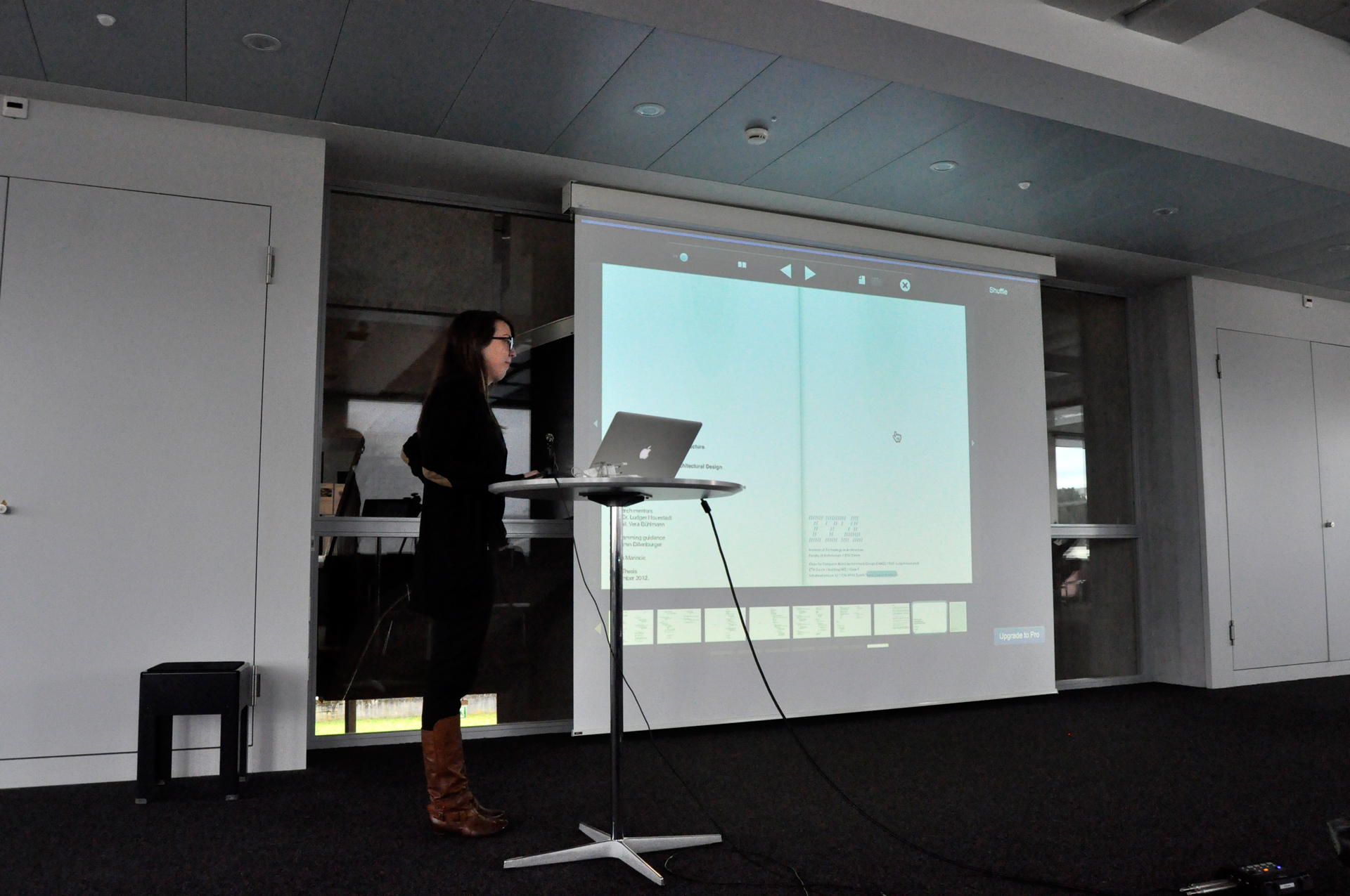
Hard Boiled World Wide Web and the End of the Distance,Predojevic Stanislava
Description:(..)
link of the publication: http://issuu.com/stanislava_predojevic/docs/predojevic_s_final_thesis_mas_eth
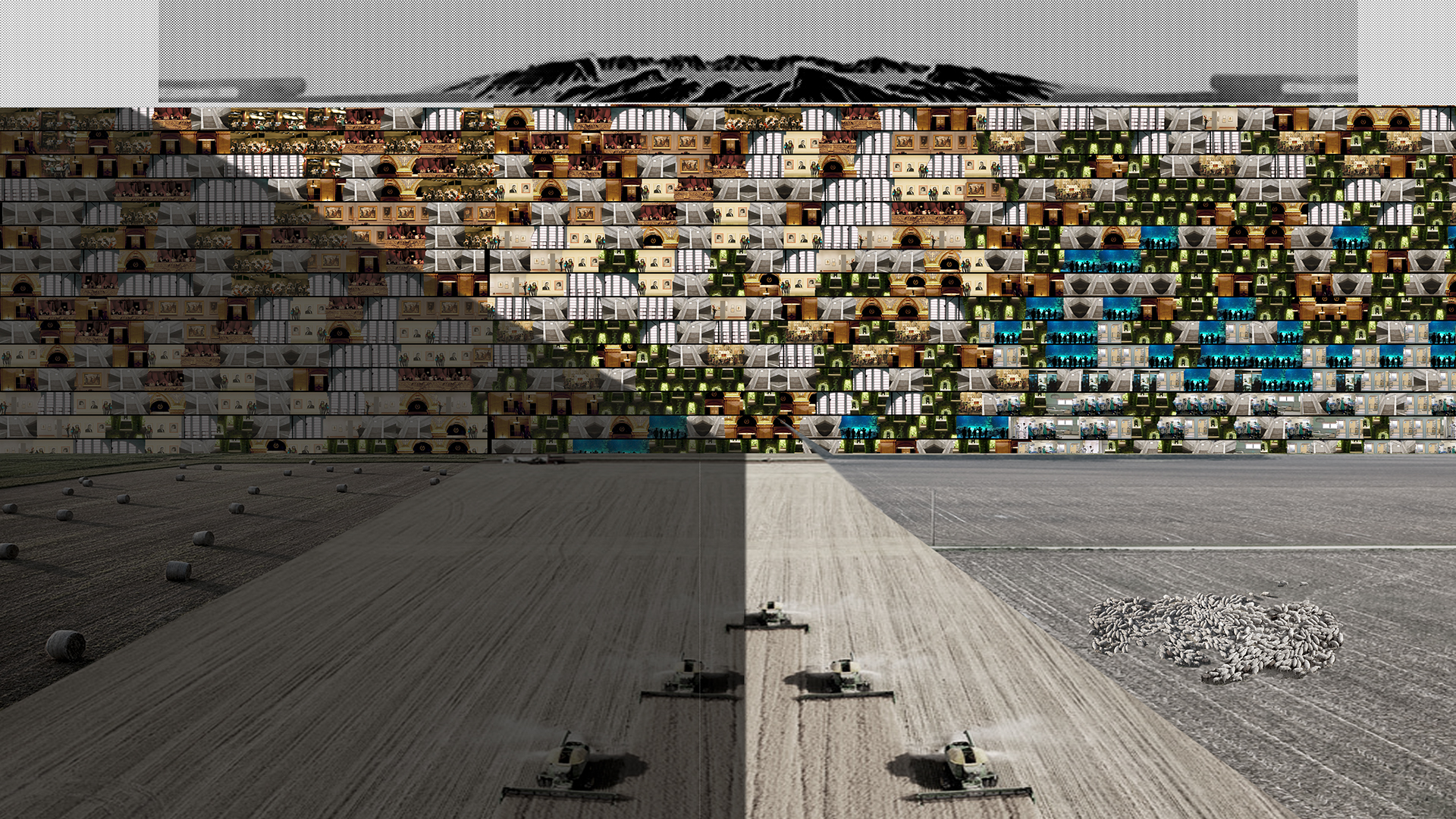
No Labor City, Argyropoulos Orestis,
Description: No Labour City is a project about the condition of the city in the era of ubiquitous infrastructures and networks. It is the condition within an abundance of energy and information that renders a society devoted to the task of its own self-invention and evolution.No Labour City is a laboratory where private and collective activities are blended together to produce the most
desirable combinations. Architecture is no longer possible (if ever was) to operate on the level of ascribing symbolic value to centralised systems of power and control: their structures now dematerialised, their organization now distributed. (Freedom), equality, independence, solitude, trust, loose their meaning and value when desirable human activity becomes primary. Instead, new words are engendered out of the interplay of the most generic activities.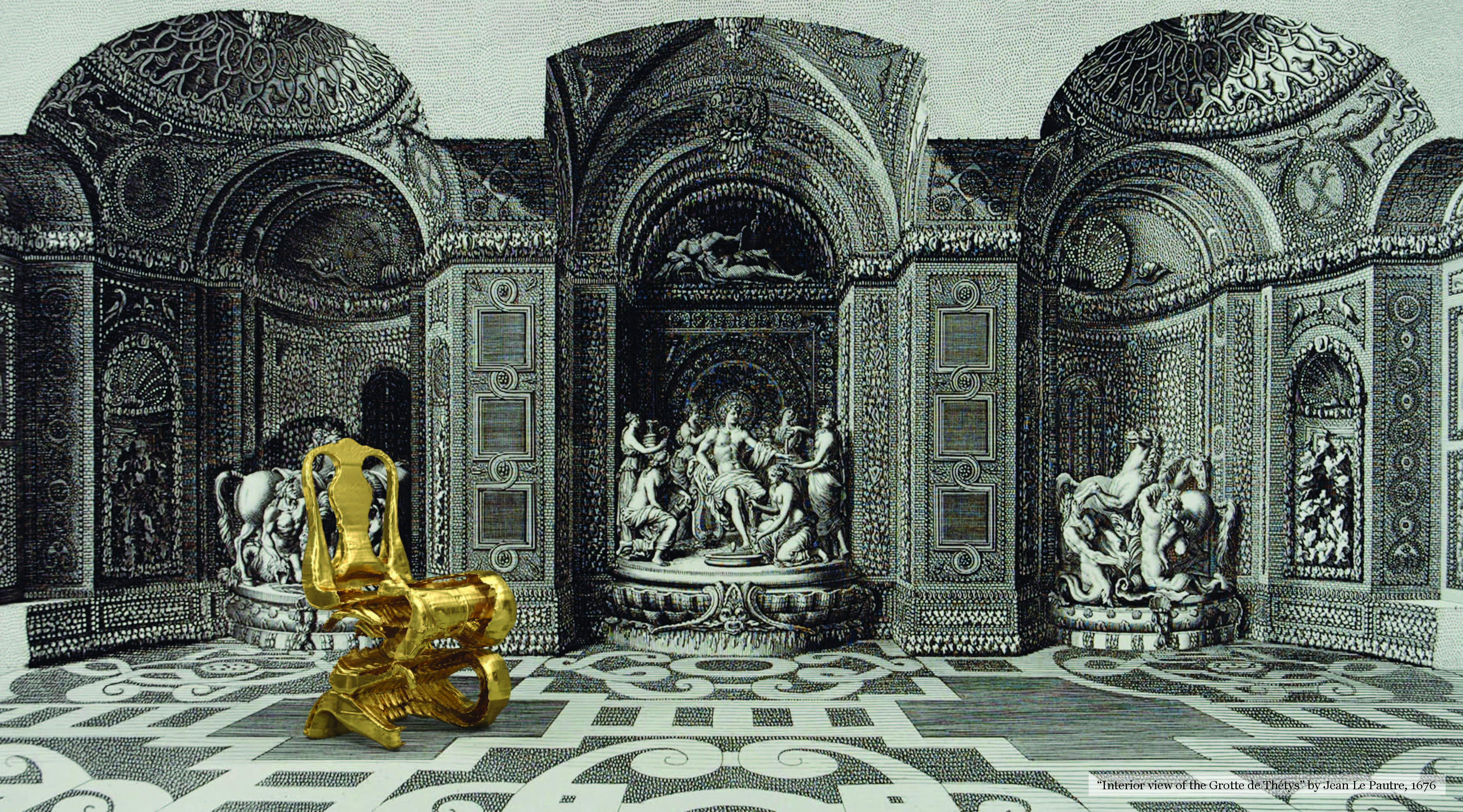
Four Chairs and all the others,Miro Roman
Description: How to design a chair that would not perpetuate the history of iconic and functional pieces of furniture, yet contain the potential of all chairs ever created? This is the central subject of project “Four chairs and all the others – Eigenchair” which is observed and explored as a sum of ideas. The concept is based on designing a chair which would refer to the genealogy of chairs, carrying at the same time the potential of all chairs that might ever be created in future. The basic tool for the design of the population of chairs, or “all others”, is the algorithm PCA, i.e. Principal Component Analysis. It is a standard tool for contemporary data analysis that has been adapted to various needs, from the neuroscience to computer graphics, and which is now applied in the field of design. The key feature of this algorithm is the intersection and interconnection of all data, whose result adapts and changes according to the required point of view, i.e. subjective interpretation. The aim of this project is to show – by conceiving and shaping a chair for the 21st century – the necessity of perceiving design through three equally important, interdependent positions: design, theory and technology. Design is now data driven.

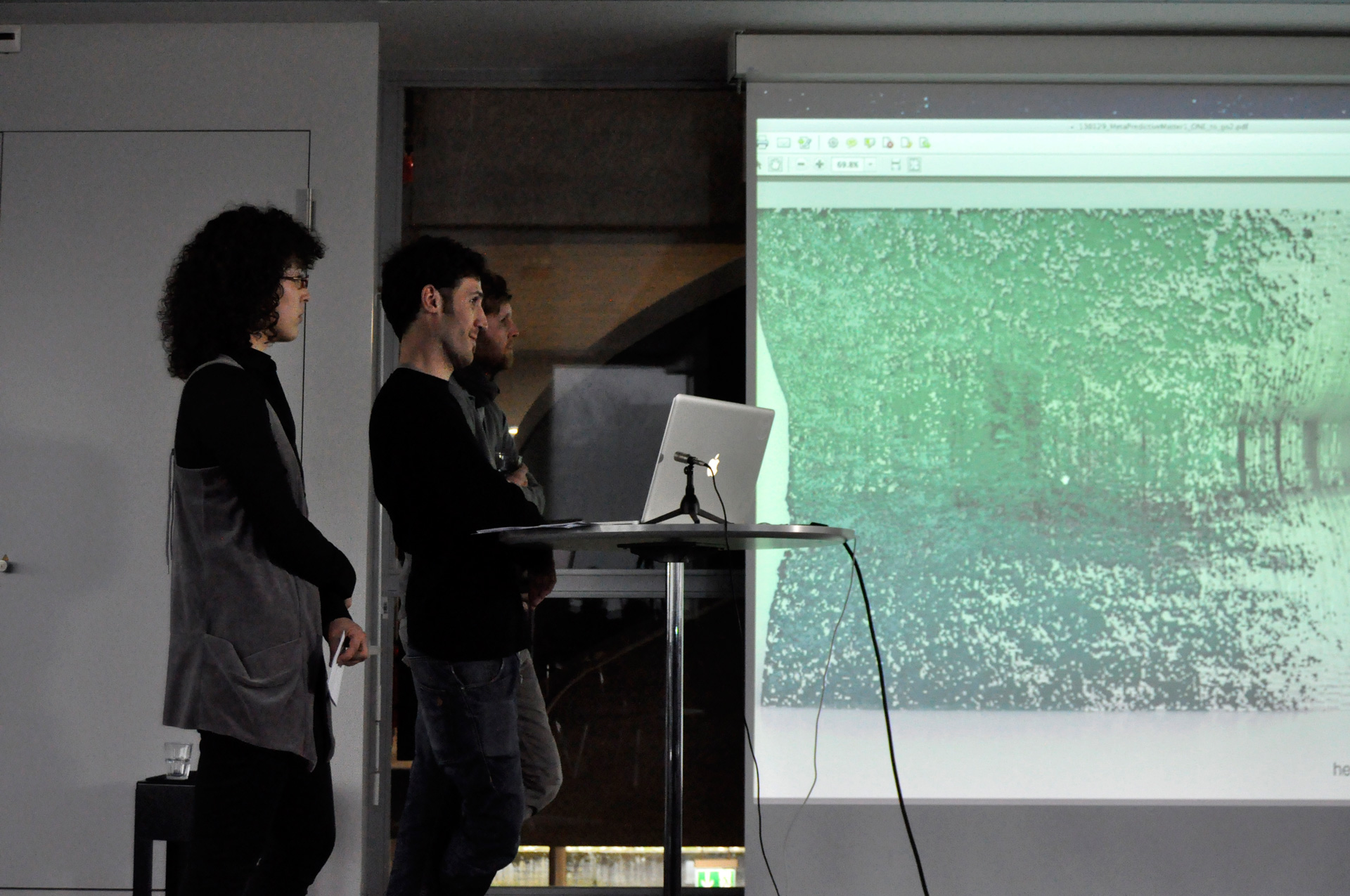 MetaPredictiveMatter, Azariadi Stella, Pantazis Evangelos,Rohlek Daniel
MetaPredictiveMatter, Azariadi Stella, Pantazis Evangelos,Rohlek Daniel
Description: Notions of time, speed, movement, flows, displacement, transit, noise and liquidity are just few of the terms that shape the contemporary architectural universe , all reflecting activities, situations and needs more than geographic implications. Globalization, information and telecommunications; all suggest that topos no longer matters. Hence, a multiplicity of components, activities and culturally diversified situations are present in the new transnational and re-territorialized culture. Architecture is entering an age of fluidity that expresses and creates new modalities, opening up possible worlds organized in different, simultaneous configurations, in hybrid spatialities. Optical phenomena and radical shifts in visuality, particularly manifest through media and digital technologies, and are having an unpredictable impact on the city space.

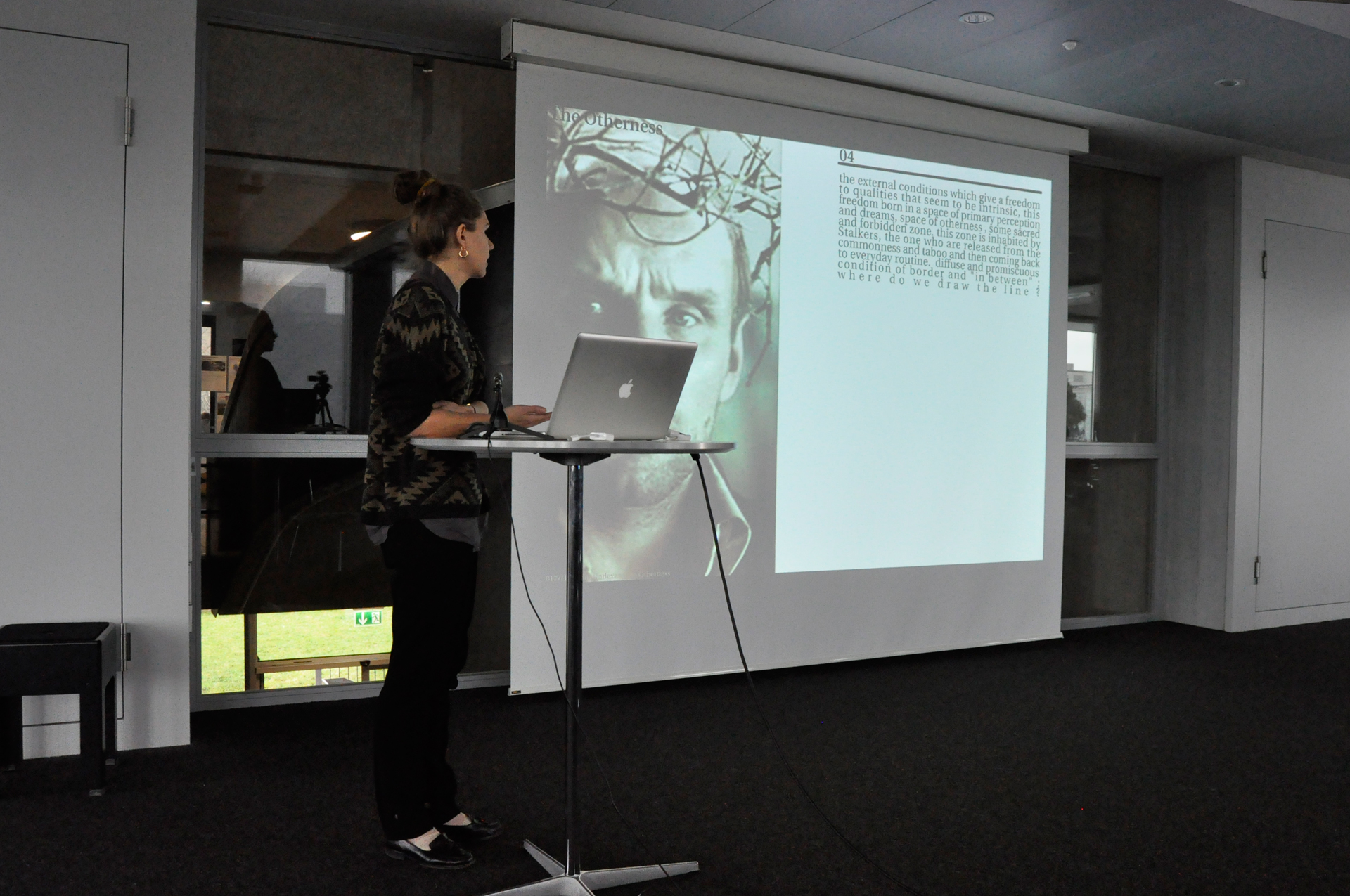
Hybridity, as an urban speculation,Ekaterina Ageeva
Description:This work is a series of experiments which aim to grasp phenomenathat take place now and mark a new tendency of understanding and
articulating relationships between us: human beings and our milieu.
Here you will find four scenarios, based on different social theories,
telling stories of hybridity: one, creatures of various race and cultures;
two, biological and mechanical species; three, gender and social
hybrids; and four, hybrid of external and internal self.
From this cloud of indexes, different combinations of phenomena can
be extract in order to see similarities and affinity of various theories
within the same space. There was no idea to choose from this
scenarios one which is more probable to happen, but by the creation
of parallel stories, to speculate on urban future.
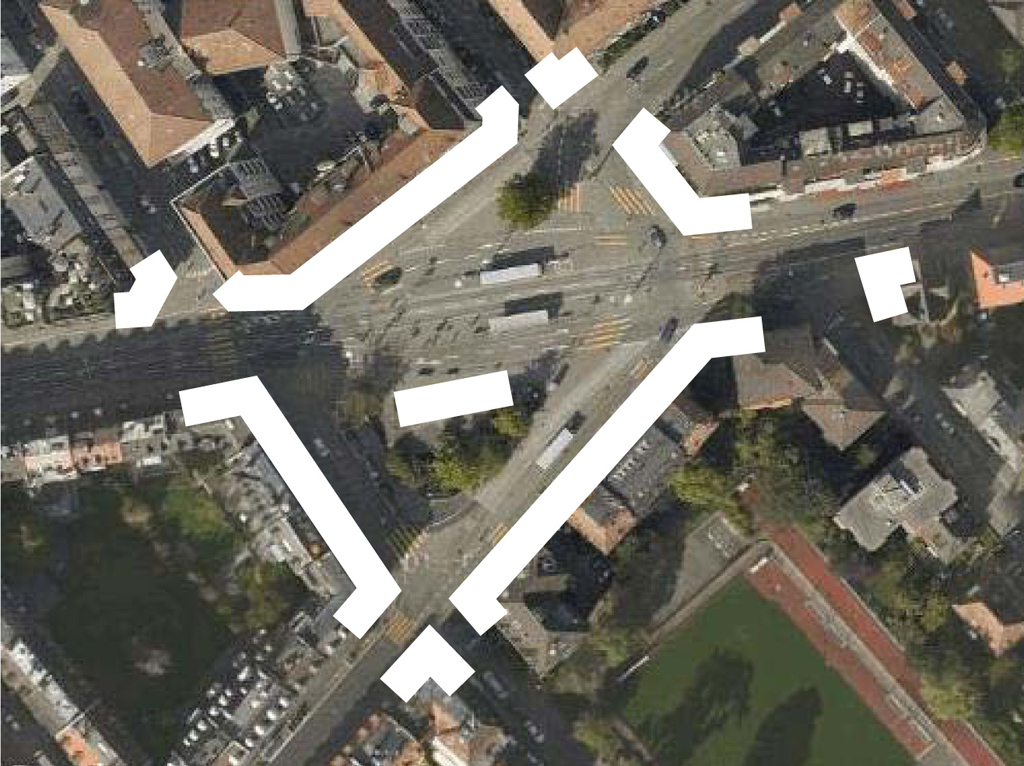

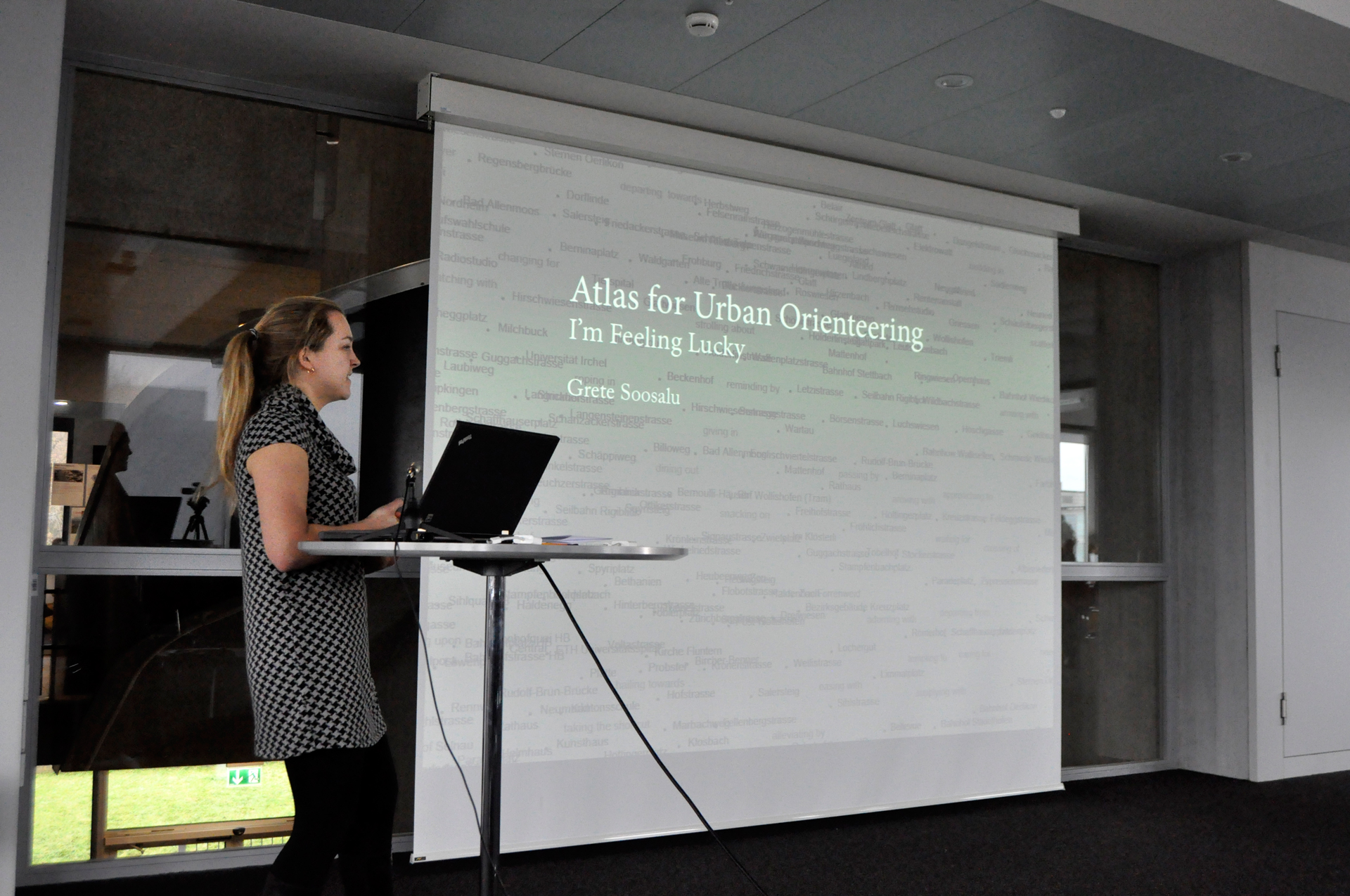
Atlas for Urban Orientiering (I’m Feeling Lucky), Grete Sosalu
Description:There are places we feel at home we havnít been yet. What would be my station in Brooklyn or my usual cafe in Kreuzberg? My fast food stall in Shibuya or the favourite dodgy concert venue in downtown Budapest?
On example of Z¸rich, the thesis introduces an atlas focusing on public transportation stations as the active nodes and gates to the local neighbourhoods. The feature maps, based on Self-Organizing Map algorithm, after reorganizing the stations by similarity, give fields of analogues of Z¸rich stations in order to enable exploring and discovering what can be found from the underlying structure of the gathered data. They offer matches based on similarities in connectivity, amenity and activity features.
In the future the atlas can be advanced into an application, which similarly to Googleís ëIím feeling luckyí function would give a most probable matching neighbourhoods to an enquired urban location.

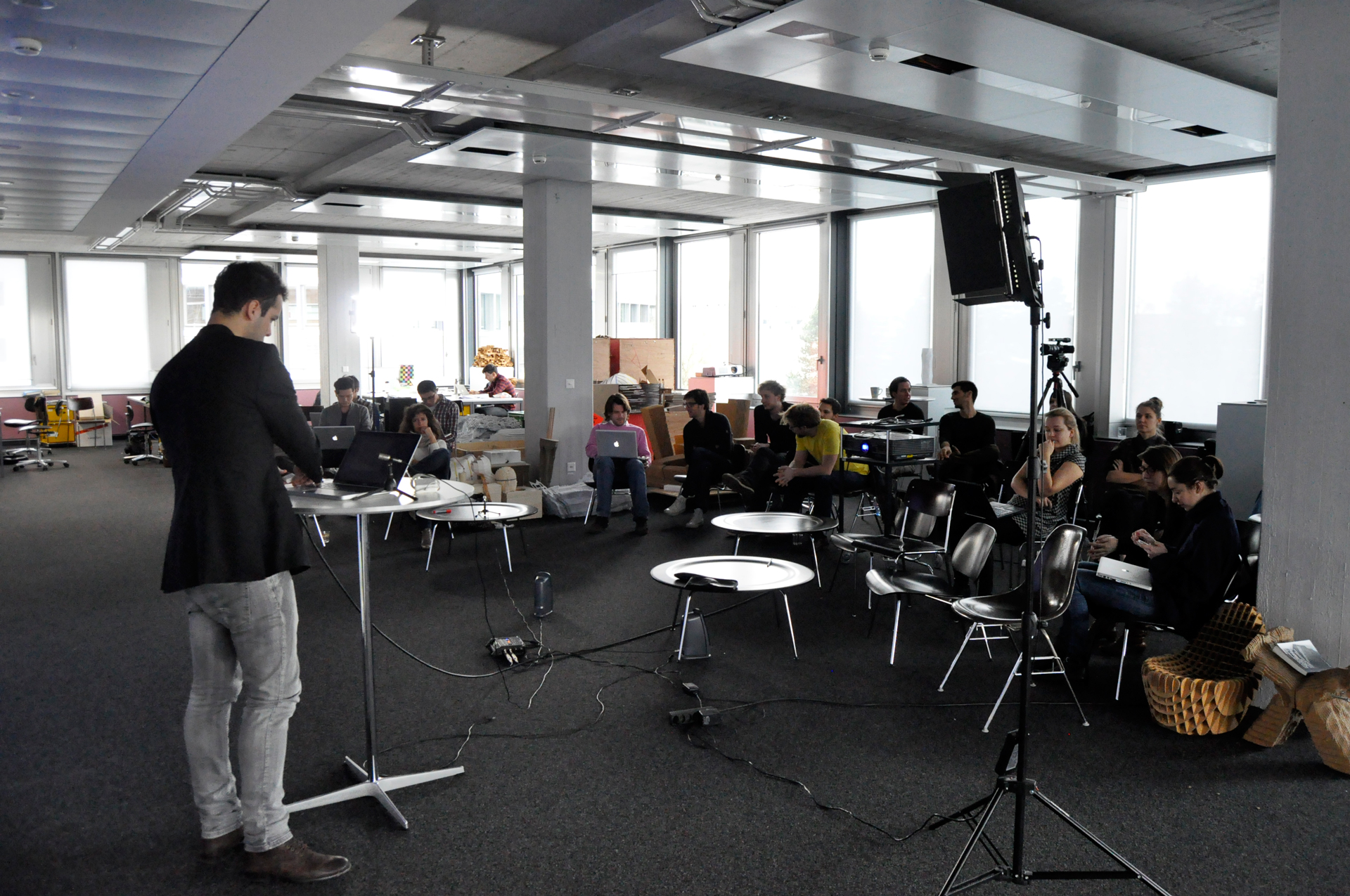
A house of things, Mauricio Rodriguez
Description: “We’re all becoming librarians” say ‘information architects‘ from Argus Associates authoring O’Reilly’s 1998, Information Architecture on the World Wide Web. The essence in architecting is of a purely organizational nature, operating univocally over an informational foundation. At their bare core, both their goals deal with providing structure to an unstructured corpus. The goal of this project is to illustrate how abstract relations are capable of re-constructing spatial configurations originating from synthetic grammars that follow a desired narrative, telling stories about people, about events, or about things. Considering artefacts as components embedded with potentiality and capable of altering architectural expericences, the notion of a house is to be re-evaluated; considering dwelling as an informational model of human activities described, organized, measured and classified in terms of household familiar objects: a ‘House of Things’.
